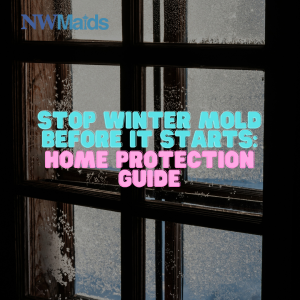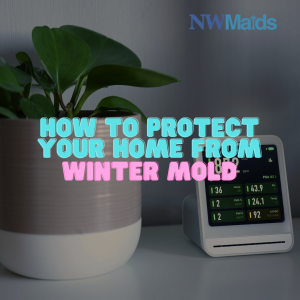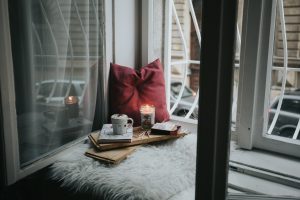Homeowners often focus on heating during the winter season, but mold growth can be a hidden problem. The combination of warm indoor air and cold outdoor surfaces creates ideal conditions for mold to thrive during the winter months. Protecting your home from winter mold requires knowledge that helps you prevent financial losses, health issues, and unnecessary stress.
Why Winter Mold Is a Serious Concern
Mold grows best in damp, humid environments, so winter conditions—with warm indoor air and freezing outdoor temperatures—create the perfect setup for condensation to form. The accumulation of moisture on windows, walls, and other surfaces provides an environment where mold spores can thrive.
Mold growth causes two major problems: it’s unattractive and it can harm your health while damaging building materials. Preventing mold growth early on helps you save money, reduce work time, and lower stress levels.
How to Protect Your Home From Winter Mold
Control Indoor Humidity Levels
Moisture is the key ingredient mold needs to grow. To prevent it, keep indoor humidity below 50%. A dehumidifier is an excellent solution for managing excess moisture in areas like basements, bathrooms, and laundry rooms. Models such as the hOmeLabs 4,500 Sq. Ft Energy Star Dehumidifier (available on Amazon) are great for large spaces and work efficiently throughout winter. A humidity monitor will help you track and adjust indoor humidity levels as needed.
Improve Air Circulation
Sealing your home for warmth can trap stale air, creating damp, stagnant areas where mold thrives. Improve airflow by opening windows on dry days, running ceiling fans in reverse to push warm air downward, and keeping all vents clear of blockages. Regularly operating bathroom and kitchen exhaust fans will also help minimize condensation buildup.
Insulate and Seal Windows Properly
Cold air entering through unsealed windows leads to condensation, one of the main causes of winter mold. Check window frames for drafts and apply weatherstripping or caulk to seal gaps. Installing insulating window film provides extra protection by reducing temperature differences that cause moisture buildup.
Keep Surfaces Dry
Simple habits make a big difference in mold prevention. Wipe away condensation from windows, mirrors, and tiles as soon as it appears. In bathrooms, dry walls and floors after showers. Clean up spills and splashes around kitchen sinks immediately. Any surface that stays damp for even a few hours can become a breeding ground for mold.
Use Mold-Resistant Products
If you’re planning winter renovations, choose materials with mold-resistant properties for paint, drywall, and insulation. These products contain protective formulations that prevent water intrusion and mold growth. Applying an anti-mold sealant to bathroom tiles and grout also helps stop spores from taking hold.
Ventilate Your Laundry Room
Laundry areas are another common mold hotspot, especially during winter when clothes are dried indoors. Ensure your dryer is vented properly to the outside and free of lint buildup. If you must air-dry clothes indoors, do so in a well-ventilated room and use a fan or dehumidifier to speed up drying.
Inspect Your Attic and Basement
Cold temperatures make attics and basements especially vulnerable to moisture and leaks. Check attic insulation for dampness and ensure your roof and gutters are in good condition to prevent water intrusion. Store basement items above floor level and away from walls to allow airflow. If moisture problems persist, consider installing vapor barriers or applying waterproofing treatments to walls.
Clean Regularly and Thoroughly
Dust and dirt can trap moisture, giving mold the organic matter it needs to grow. Regular cleaning helps keep surfaces dry and mold-free. Focus your inspections on bathrooms, kitchens, window sills, and entryways—areas most prone to dampness. A simple mix of white vinegar and water works as an effective natural mold deterrent for hard surfaces.
Monitor for Hidden Moisture Problems
Moisture often hides in unexpected places such as behind furniture, under rugs, or inside walls. Use a moisture meter to detect problem areas, or watch for signs like musty odors, peeling paint, or wall discoloration. Early detection helps prevent mold from spreading unnoticed during the colder months.
Maintain Your Heating and Ventilation Systems
A well-maintained HVAC system ensures proper air circulation and prevents damp spots from forming. Replace air filters regularly, and schedule professional duct cleaning annually or every two years. Keep an eye on your system’s built-in humidifier, as excessive humidity can lead to mold problems.
Check for Plumbing Leaks
Even a slow, small leak can lead to a major mold issue over time. Inspect areas under sinks, behind appliances, and around toilets for any signs of leakage. Repair issues immediately and dry all affected areas thoroughly. Monitoring your water bill can also help identify hidden leaks before they escalate.
Store Items Properly
Avoid storing cardboard boxes or fabric items directly on basement floors or near exterior walls. Use plastic bins with secure lids, and place them on shelving units to improve air circulation. If you store firewood indoors, keep it in small quantities and away from walls, as damp wood can add excess moisture to the room.
Keep Indoor Plants Mold-Free
Houseplants brighten up winter homes, but overwatering can lead to mold in the soil. Use pots with proper drainage and let the top layer of soil dry out between waterings. Sprinkling activated charcoal powder on the soil surface can help absorb excess moisture and prevent mold growth.
Respond Quickly to Moisture Incidents
Accidents happen—a spilled drink, a small leak, or a burst pipe can quickly lead to mold if not addressed right away. Dry affected areas thoroughly within 24–48 hours using fans and dehumidifiers. If a large area becomes saturated, contact a professional cleaning service to ensure proper drying and sanitization.
Conclusion
Preventing winter mold requires consistent humidity monitoring, good airflow, and prompt responses to any moisture problems. With regular attention and small daily actions, you can protect both your home and your health throughout the winter months.
NW Maids is here to help you keep your home clean and mold-free all season long. Our experienced cleaning professionals can ensure every corner of your home stays spotless, dry, and comfortable during the winter.





